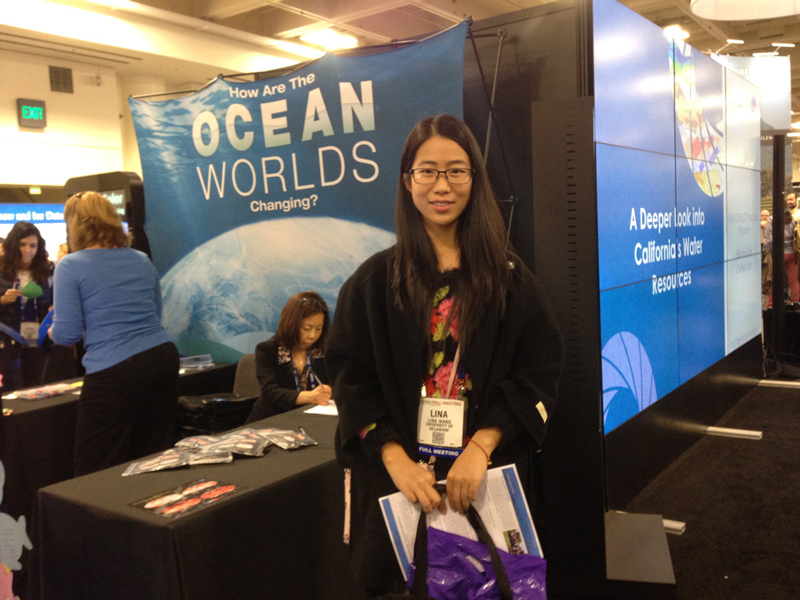


Heating and cooling
Photo by iStock April 01, 2021
Amid overall global warming, sections of Southern Hemisphere oceans show temperature shifts
The global ocean has been warming up as a consequence of anthropogenic, or human-made, climate change, with 90% of the anthropogenic warming stored in the world’s ocean, leading to an increase in ocean heat and sea level rise.
From 2003 to 2012, however, the surface temperature of the Earth experienced what is known as a global surface warming slowdown. Instead of heating up rapidly, as would be expected as a consequence of global warming, the global surface temperatures instead stayed flat.
Rather than this being proof that global warming isn’t happening, University of Delaware Professor Xiao-Hai Yan showed in previous research that the heat wasn’t simply disappearing and the ocean wasn’t magically cooling. Instead, the heat was being redistributed, specifically, to deeper layers of the ocean and especially the oceans in the Southern Hemisphere.
Unlike other areas of the ocean, during the global surface warming slowdown, the Southern Hemisphere oceans, especially the Southern Ocean, experienced rapid warming as most of the global ocean heat storage occurred in the Southern Hemisphere.
A new paper from UD doctoral student Lina Wang and her collaborators from around the world shows that now that the slowdown period has ended, the rapid warming that occurred in the Southern Hemisphere oceans from 2003 to 2012 has slowed down and even changed to cooling in certain regions — specifically the Southeast Indian Ocean and South Pacific Ocean.
The research was recently published in the Geophysical Research Letters scientific journal.
This shift can be attributed to changing winds which caused the downwelling of warmer waters to the deep ocean during the slowdown period. Now that the winds have changed their course, the cooler subsurface water is once again being pumped up.
“Lina and her collaborators found that the deep part of the Southern Ocean is no longer warming. It shows a cooling,” said Yan, the Mary A.S. Lighthipe Professor in Marine Studies and Wang’s advisor. “This might indicate that no more heat is going to the Southern Ocean as it did in the slowdown period. It indicates the acceleration of global warming is happening and may last for quite a long time. It’s coming back to how it was before the slowdown period.”
The data used in the study was gathered from floats of the international Argo program, which since 2006, has been providing continuous real-time ocean observations in the upper 2,000 meters of the ocean from a near-global array of autonomous profiling floats.
This data helped the researchers determine that the Southern Hemisphere oceans experienced warming during the slowdown period because of the strengthening of westerly winds, which helped transport warm water into the deeper layers of the ocean.
“Because of the changing wind, less warm water is going into the deep ocean compared to the previous period so it now shows a cooling,” said Wang, a doctoral student who is completing her dual degree program with UD’s College of Earth, Ocean and Environment and Xiamen University in China. “If you think about it, if less heat is added into the deeper layer of the ocean, the water temperature becomes cooler. When the ocean doesn't receive more warm water, we can say that compared to before, it becomes cooler.”

Around 2013, the winds became weaker, which caused less warm water to be transported to the deep layers of the oceans in the Southern Hemisphere.
Yan said that the implication of Wang’s research is that now that the Southern Hemisphere oceans are no longer warming, and cooling in some places, a lot of heat energy will go back into the surface waters and lead to rapidly increasing surface temperatures.
“Now that it no longer shows a lot of heat going to the Southern Ocean any more, that means that a lot of energy will go back into the surface,” said Yan. “The global mean surface temperature record has shown an acceleration in warming since 2013, and it reached a record last year.”
This decadal shift of temperature in the oceans — the cooling period from 2003 to 2012 and the current period which shows a warming beginning in 2013 — could be of critical importance to showing how global warming patterns in the ocean shift along certain time scales.
“We can look at which time scales play important roles, for example, decadal time scales or annual time scale,” said Yan.
Wang added that this new finding, “gives us a picture of how the decadal variations in the ocean heat uptake and redistribution modulate the long-term climate change.”
International Collaboration
Having arrived at UD in 2016 as part of the dual degree program with Xiamen University (XMU), Wang stressed that this paper would not have been possible without a strong group of international collaborators.
Co-authors on the paper represent institutions in four countries: the United States, China, Australia and Indonesia.
“Dr. Yan is very supportive for my research, and he is very open for me to connect with researchers in other countries, like we did with this paper,” said Wang.
Yan is the director of UD’s Center for Remote Sensing, and the director of UD-XMU Joint Center for Remote Sensing under the framework of UD-XMU Joint Institute of Coastal Research and Management (Joint-CRM). He added that in order to properly study climate change now and into the future, it will be imperative to keep these international collaborations going.
“International collaboration is incredibly important,” said Yan. “We cannot go back to a time period where we do not have international collaboration. This paper shows an example of an international cross ocean collaboration on research. Particularly, a partnership between UD and Xiamen University.”
Contact Us
Have a UDaily story idea?
Contact us at ocm@udel.edu
Members of the press
Contact us at 302-831-NEWS or visit the Media Relations website

